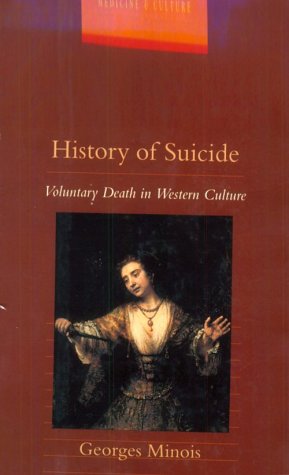Medicine and Culture
1 total work
According to the author, the complexity of the philosophical problem of suicide is reflected in Western culture's contradictory and ambivalent attitudes on the subject: Cato, Cleopatra and Samson were heroic in taking their own lives; Judas, Brutus and Achitophel were cowards. In this history, he examines how a culture's attitudes about suicide reflect its larger beliefs and values - attitudes toward life and death, duty and honor, pain and pleasure. Minois begins his survey with classical Greece and Rome, where suicide was acceptable, even heroic, under some circumstances. With the rise of Christianity however, suicide was unequivocally condemned as "self-murder" and an insult to God, who alone had the right to give and take life. With the Renaissance and its renewed interest in classical culture, suicide re-emerged as a philosophical issue. Minois finds examples of changing attitudes in Renaissance texts by Bacon, Montaigne, Donne and Shakespeare, whose question "To be, or not to be?" signalled the return of a more ambivalent view of suicide and a more open discussion of its meaning.
Minois follows the ongoing re-evaluation of suicide through the Enlightenment and the Romantic periods, and examines attitudes which emerge in 19th- and 20th-century science, law, philosophy and literature - developments that would enable a writer such as Camus to place the issue of suicide at the heart of modern philosophy. Minois comments on the most recent turn in this long and complex history - the emotive debate over euthanasia and the right to die.
Minois follows the ongoing re-evaluation of suicide through the Enlightenment and the Romantic periods, and examines attitudes which emerge in 19th- and 20th-century science, law, philosophy and literature - developments that would enable a writer such as Camus to place the issue of suicide at the heart of modern philosophy. Minois comments on the most recent turn in this long and complex history - the emotive debate over euthanasia and the right to die.
